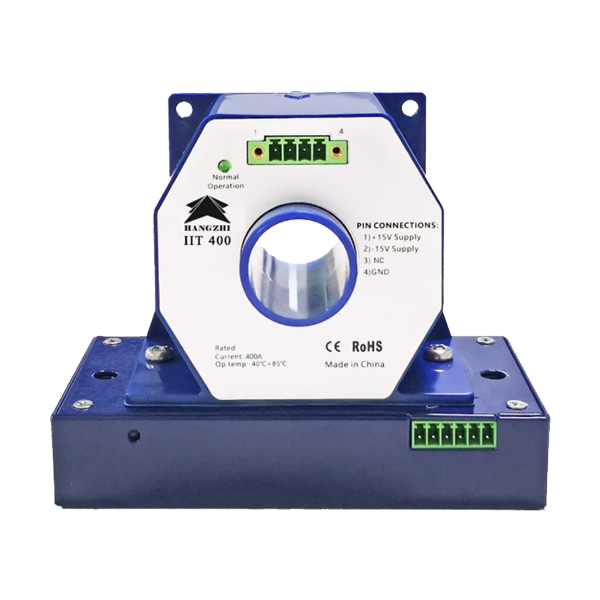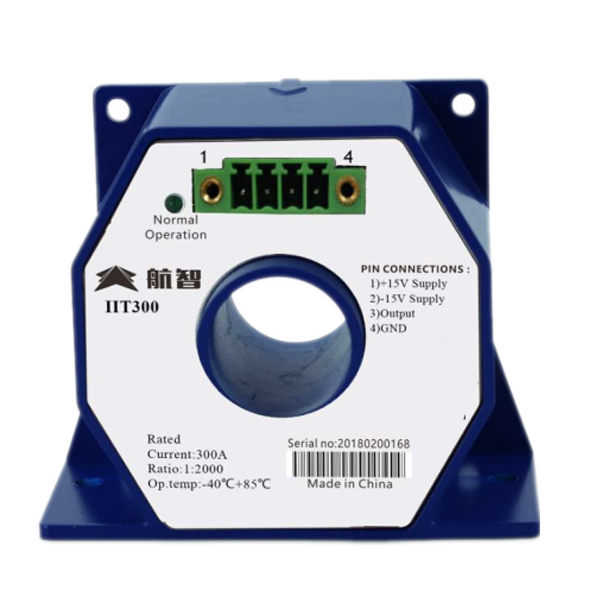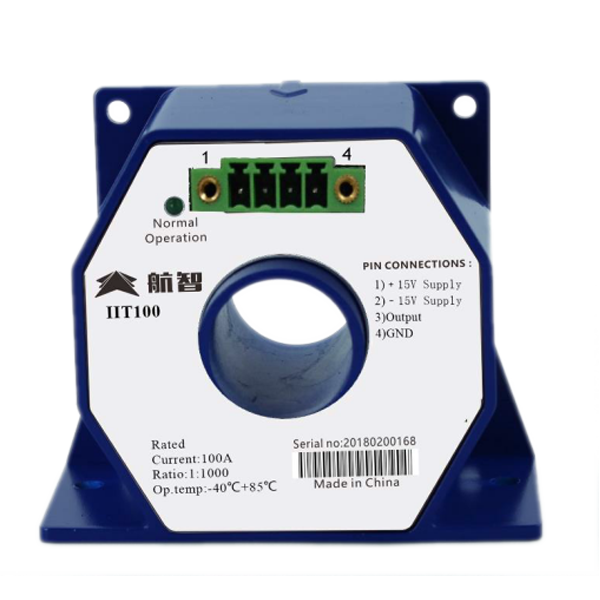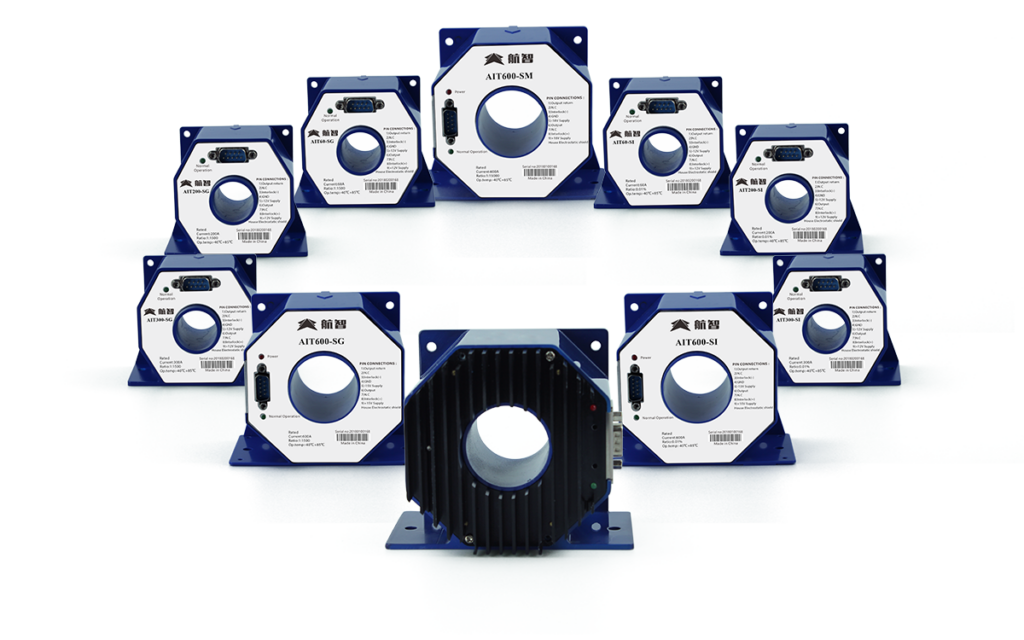
Current sensors play a key role in the rapidly evolving world of industrial automation and efficiency. These devices are essential for monitoring and controlling electrical systems, ensuring optimal performance and reducing energy consumption. Industries can significantly improve operational efficiency, cost savings, and sustainability. This article post explores how current sensors contribute to enhancing industrial efficiency.
What Does A Current Sensor Do?
UN transducteur de courant is an electrical device that measures or converts an electrical current for monitoring or control purposes. A current transducer does the following:
Current Measurement: A current transducer’s principal duty is to properly measure the magnitude of an electrical current flowing through a conductor. This current might be either alternating current (AC) or direct current (DC).
Isolement: Electrical isolation is frequently provided by current transducers between the input current and the output signal. This isolation is critical for safety and preventing interference between various components of an electrical system.
Signal Conversion: Current transducers frequently convert measured current into a proportionate output signal, which is typically in the form of voltage or current. This conversion facilitates communication with other electronic devices such as microcontrollers, PLCs (Programmable Logic Controllers), and data acquisition systems.
Amplification: Some current transducers may amplify the current signal in order to generate a more powerful and easily measured output. In certain applications, this amplification can help enhance the precision of current measurement. For the RIT leakage current sensor peut convertir le courant avec des mini ampères en tension de 1 ou 2 V mesurable par le PLC ou les microcontrôleurs.
Les transducteurs de courant peuvent avoir une variété de types de sortie, tels qu'une sortie de tension (par exemple, un transducteur de courant de sortie 0-10 V), une sortie de courant, une sortie de fréquence ou des protocoles de communication numérique (par exemple, un transducteur de courant 4-20 mA ou Modbus). Le type de sortie utilisé est déterminé par les besoins uniques de l'application.
Accuracy and Sensitivity: Current transducers are built to deliver precise measurements within a given range. To match the intended current range, they frequently include adjustable sensitivity or gain settings.
Hangzhi current transducers include protective mechanisms to defend against overcurrent circumstances and other electrical issues.

Types of Industrial Current Sensors
There are many types of current sensors used in industrial applications, including:
Current transformers
These sensors use induction and the natural magnetic field to measure current. They are commonly used in industrial environments.
Shunt resistors
These resistors have a precise, low resistance and are used to measure current by measuring the voltage drop across them.
Bobines de Rogowski
These sensors use a flexible coil wrapped around a current-carrying conductor to measure alternating current. They are used for measuring high-speed current transients, pulsed currents, or 50/60 Hz line power.
These sensors are reliable and sensitive, and can measure a few milliamperes of direct current. They are often used for battery monitors.
These sensors produce a Hall voltage when the magnetic flux density around them is above a threshold. They are well-suited for current sensing applications.
These sensors can be clamped onto existing electrical wiring to measure the current passing through.
Current sensors are also known as current transducers or current sense transformers. They can be used in a variety of applications, such as controlling the electrical parameters of a locomotive engine or measuring the state of charge of an electric car battery.

How Current Sensors Enhance Industrial Efficiency?
Current sensors contribute to the improvement of energy efficiency in industrial processes in several ways:
Real-Time Monitoring and Control:
Current sensors provide real-time data on the current flowing through electrical systems. This allows for immediate detection of anomalies and adjustments to be made promptly, ensuring optimal performance and preventing potential failures. By continuously monitoring current levels, these sensors can detect overloads and potential short circuits, thereby preventing damage to equipment and ensuring the safety of the system and personnel.
Energy Consumption Analysis:
Sensors can monitor energy consumption in manufacturing processes, analyzing energy usage patterns. This allows manufacturers to identify inefficient operations and make necessary adjustments to reduce energy consumption. This is particularly important in industries where energy costs are a significant part of the operational expenses.
Optimized Power Management:
In applications such as electric vehicles and industrial drives, current sensors are crucial for managing power efficiently. They help in balancing the load and ensuring that power is distributed optimally across different components. This leads to reduced energy waste and improved overall efficiency.
Predictive Maintenance:
Wireless current sensors enable remote monitoring of machine performance, allowing for predictive maintenance. By identifying potential issues before they lead to failures, these sensors help in reducing downtime and maintaining consistent energy efficiency.
Thermal Management:
By monitoring current, sensors can help in managing the thermal load on electrical systems, preventing overheating and extending the lifespan of components. This, in turn, reduces the need for frequent replacements and maintenance, leading to lower energy consumption and costs.
Integration with Industrial IoT:
Current sensors can be integrated with Industrial IoT solutions, providing data that can be analyzed to optimize processes further. This integration allows for smarter, more efficient industrial operations, reducing energy waste and improving overall efficiency.
Low-Power Operation:
Some current sensors, such as those using Hall effect technology, have low power consumption characteristics. This means they can effectively lower the overall energy consumption of the system, contributing to improved energy efficiency.
In summary, current sensors enhance energy efficiency in industrial processes by providing real-time data, analyzing energy consumption patterns, optimizing power management, enabling predictive maintenance, managing thermal loads, integrating with IoT, and operating with low power consumption.

How Do I Choose a Current Sensor for Industrial Needs?
The following factors should be considered when selecting a current sensor suitable for industrial needs.
Understand Your Application Requirements
Avant de choisir un transducteur, vous devez savoir ce dont vous avez besoin, par exemple le type de courant (CA ou CC), la gamme de valeurs de courant que vous devez mesurer et la précision requise.
Consider Right Measurement Range
Les capteurs de courant ont une certaine plage de courant qu'ils peuvent mesurer avec une grande précision ; cette plage est appelée plage de mesure. Il est crucial de choisir des capteurs avec une plage de mesure. Si la plage est trop élevée, il y a un risque de surcharge du capteur, tandis que si la plage est trop faible, toute la plage de courant ne peut pas être mesurée. La résolution du capteur ou la variation minimale de courant qu'il peut détecter est également cruciale.
Care About the Sensor’s Accuracy and Linearity
La précision et la linéarité sont des considérations tout aussi importantes pour les transducteurs. La précision est le degré de concordance entre les lectures et les valeurs réelles, tandis que la linéarité d'un capteur est sa capacité à conserver une sensibilité constante sur l'ensemble de sa plage de mesure. Pour garantir des relevés précis et fiables, il convient d'utiliser un capteur doté d'une bonne précision et d'une bonne linéarité.
High-precision transducers should have low error rates and provide consistent, reliable readings. Hangzhi IIT industrial current sensor products have high accuracy, linearity & stability, and low temperature drift and zero drift features, and are providing services to our customers with the top performance and effective cost.
Consider Response Time
Le temps de réponse correspond au temps nécessaire à un capteur pour enregistrer les variations de courant et générer les signaux de sortie appropriés. Le choix d'un capteur ayant un temps de réaction rapide garantit des lectures précises et opportunes. Si le temps de réaction est trop long, le capteur ou le circuit risque d'être endommagé dans les situations où le courant varie constamment.
Evaluate Output Signal Type
Check the type of signal that the current transducer sends out. Typical output types include digital signals and analog signals (current or voltage). Verify that the transducer’s output signal is compatible with your control system or data acquisition device.
Conditions Environnementales, Montage et Installation
Tenez compte de l'environnement de travail, notamment de la plage de température, de l'humidité et de l'exposition potentielle à des produits chimiques ou à des vibrations, et choisissez un transducteur capable de résister à ces conditions.
Assurez-vous que les exigences de montage et d'installation du transducteur sont alignées sur les capacités et les contraintes de votre système. L'isolement est également l'un des facteurs dans le choix des capteurs. Assurez-vous que le transducteur fournit un isolement électrique adéquat pour la sécurité et pour éviter les interférences de signal.
Check Compatibility with Existing Systems
Vérifiez la compatibilité du transducteur actuel avec vos systèmes existants. Assurez-vous que la taille physique du transducteur, les options de montage et les connexions électriques s'intègrent parfaitement à votre installation.
La compatibilité réduit la nécessité d'apporter des modifications supplémentaires et garantit une intégration harmonieuse. Vérifiez que le transducteur répond aux normes et aux spécifications requises pour votre système.
Compliance, Standards and Cost
Check that the transducer meets any relevant industry standards and regulations for your application. Consider the cost of the transducer in relation to your budget and the value it provides in terms of performance and reliability.
Check Manufacturer Reputation
Avant d'acheter un capteur de courant, renseignez-vous sur la notoriété de l'entreprise qui l'a fabriqué. Lisez les critiques et demandez des recommandations aux professionnels du secteur. Choisissez un transducteur d'un fabricant réputé, disposant d'une bonne assistance à la clientèle et d'un historique fiable.
Boost Your Industrial Efficiency with Hangzhi Precision’s Current Sensors
Current sensors are indispensable tools in enhancing industrial efficiency. In the era of Industry 4.0, the role of current sensors is only set to grow, as they become more sophisticated and integrated into complex industrial systems. As technology advances, current sensors will continue to play a critical role in driving industrial efficiency and innovation.
Shenzhen Hangzhi Precision Electronics Co., Ltd. is a technology-leading enterprise dedicated to the research and development, production, sales and solution customization of high-precision current sensors, voltage sensors and high-precision electrical measuring instruments. We strive to build a well-known brand of precision current sensors and precision electrical measuring instruments in the DC field, and strive to develop into an internationally leading leader in precision electronics in the field of DC systems.
